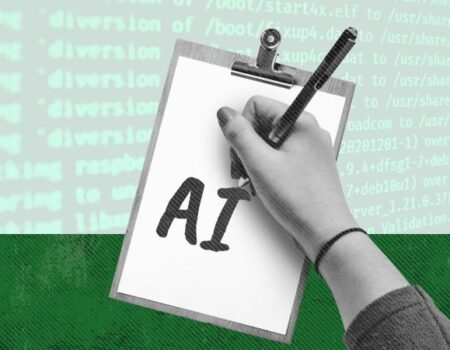AI Intent — Figuring Out the Purpose that Drives Service Tech
Imagine sitting across from someone on a first date, and they ask, “What’s your five-year plan?” A seemingly innocent question — but behind it lies a puzzle. Are they assessing your ambition, testing your long-term goals, or just making conversation? Understanding what they really mean takes a bit of reading between the lines.
Now imagine artificial intelligence doing the same thing. Every time we type or speak to a virtual assistant or AI chatbot, there’s an underlying goal we’re trying to achieve. Recognizing that goal — the intent — is at the heart of modern AI. And in today’s world, where customer experience is everything, understanding AI intent isn’t just a technical detail; it’s a powerful business asset.
In this blog, we’ll explore what AI intent means, why it matters, the different types it takes, and how it’s built into the fabric of the digital tools we use every day — from AI chatbots to the latest AI marketing trends.
What is AI Intent?
At its core, AI intent refers to the goal behind a user’s input when they interact with an AI system. It’s not just about the words they use — it’s about what they actually want to achieve.
Whether someone is asking, “How’s the weather in Paris?” or typing “Buy noise-canceling headphones,” the AI needs to decipher the user’s motivation. Is it a question? A command? A need for help?
By identifying that intent, AI can tailor responses that are relevant, timely, and helpful — essentially reading between the digital lines.
Why Understanding AI Intent Matters
The ability of AI systems to detect intent makes interactions faster, smoother, and more satisfying. Here’s why it’s become such a foundational piece in today’s customer-facing technologies:
- Personalization and Relevance
- Speed and Efficiency in Customer Service
- 92% improved response times
- 83% easier resolution of customer requests
- Revenue Growth Opportunities
When AI can interpret your intent, it skips the guesswork. Instead of forcing users to rephrase their questions or click through irrelevant links, it gets straight to the point. This personalized approach enhances customer satisfaction — a key factor in loyalty and repeat business.
Many businesses now rely on AI chatbots to handle customer queries. When these bots understand intent, they respond quicker and more accurately. According to recent surveys, businesses using AI for customer service report:
AI that understands when a customer is ready to buy can seize the moment. Smart bots can upsell or cross-sell products by recognizing transactional intent — for example, suggesting accessories when someone searches for a new phone. It’s a subtle but powerful move that turns passive browsing into active buying.
The Four Core Types of AI Intent
Not every user interaction looks the same — and not every intent leads to the same outcome. To respond accurately, AI systems sort intent into broad categories.
- Informational Intent
- Navigational Intent
- Transactional Intent
- Support Intent
This is the most common type. When users ask questions or look for facts, they’re seeking information. For example:
“How do I make gluten-free pizza?”
“What is the best camera for beginners?”
AI responds by providing answers, recommendations, or content. In fact, studies show that over 96% of AI-related searches are informational in nature — a sign of how much we rely on AI to be our digital encyclopedias.
Sometimes users know where they want to go, just not how to get there. Searching for “Apple Support” or “Prompt AI Design Tool” shows navigational intent — the user is looking for a specific website or resource.
AI helps by guiding them directly to the destination. This is especially important in search engines, smart assistants, and branded AI experiences.
Here, the user is ready to act. Whether it’s purchasing a product, booking a flight, or scheduling a demo, they want to get something done. A simple query like “Buy iPhone 15” kicks AI into action — connecting the user with product pages, deals, or checkout options.
This kind of intent is gold for ecommerce and digital services. And it’s where well-trained AI chatbots shine, especially when designed to upsell or cross-sell products right in the moment of decision.
When users are stuck or confused, they turn to AI for help:
“How do I reset my password?”
“Why hasn’t my order arrived?”
These support-based queries are easily handled by bots trained in intent recognition. They don’t just save businesses time — they deliver real-time support that scales effortlessly.
What Powers Intent Detection? Key Components
Just as intent comes in different types, its detection involves several moving parts. Let’s break it down
- User Input (Query)
- Intent Classification
- Context Awareness
- Entity Recognition
- Expressions (Utterances)
Everything starts with a user message — spoken or typed. The clarity of this message helps determine how easily the AI can understand the request.
Using natural language processing (NLP), AI analyzes the input and labels it according to intent type. Is it a question? A command? A cry for help?
AI systems don’t just look at the words — they consider time, location, past interactions, and more. A query like “Book a table” could mean different things depending on the context. This deeper awareness makes AI responses smarter and more precise.
Entities are specific keywords within a query — like product names, actions, or topics. For example, in “Track my headphone order,” the entities are “track,” “headphone,” and “order.” Recognizing them helps the AI take the right action.
Different users phrase things differently. Someone might say “Where can I eat nearby?” while another writes “Nearest restaurant.” Both imply the same navigational intent. That’s why AI models are trained on a wide variety of expressions to handle natural conversation fluidly.
The Rise of AI Intent in Modern Business
Today’s customers expect fast, personalized, and frictionless experiences — often powered by AI. If your digital assistant doesn’t understand them the first time, they’ll move on. That’s why AI intent isn’t just a buzzword — it’s central to customer experience strategies, especially in sectors like ecommerce, SaaS, and hospitality.
With the rise of AI marketing trends, understanding user intent is no longer a backend function — it’s front and center in how businesses attract, engage, and convert customers. AI-driven tools that combine intent detection with real-time interaction don’t just answer questions; they build trust and drive growth.
Partner with our Digital Marketing Agency
Ask Engage Coders to create a comprehensive and inclusive digital marketing plan that takes your business to new heights.
Contact Us
Final Thoughts
AI is quickly becoming the standard for customer interaction, and its success hinges on its ability to understand human intent. As we train AI chatbots to recognize, process, and act on different types of intent, the results speak for themselves — more relevant experiences, quicker resolutions, and better business outcomes.
From recognizing when someone wants to upsell or cross-sell products to anticipating customer support needs before they even articulate them, intent-aware AI is reshaping how we do business.
In the age of AI marketing trends and hyper-personalized customer journeys, the brands that master intent are the ones that will stay ahead of the curve — not by guessing what customers want, but by understanding it before they finish typing.
Ready to turn smart insights into real conversions? Let Engage Coders craft AI-driven web experiences that understand your customers’ intent, engage them meaningfully, and drive growth through strategic design, development, and digital marketing.










